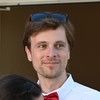Object-Level Dynamic Scene Reconstruction With Physical Plausibility From RGB-D Images
2023
Ph.D. Thesis
ev
Humans have the remarkable ability to perceive and interact with objects in the world around them. They can easily segment objects from visual data and have an intuitive understanding of how physics influences objects. By contrast, robots are so far often constrained to tailored environments for a specific task, due to their inability to reconstruct a versatile and accurate scene representation. In this thesis, we combine RGB-D video data with background knowledge of real-world physics to develop such a representation for robots. Our contributions can be separated into two main parts: a dynamic object tracking tool and optimization frameworks that allow for improving shape reconstructions based on physical plausibility. The dynamic object tracking tool "EM-Fusion" detects, segments, reconstructs, and tracks objects from RGB-D video data. We propose a probabilistic data association approach for attributing the image pixels to the different moving objects in the scene. This allows us to track and reconstruct moving objects and the background scene with state-of-the art accuracy and robustness towards occlusions. We investigate two ways of further optimizing the reconstructed shapes of moving objects based on physical plausibility. The first of these, "Co-Section", includes physical plausibility by reasoning about the empty space around an object. We observe that no two objects can occupy the same space at the same time and that the depth images in the input video provide an estimate of observed empty space. Based on these observations, we propose intersection and hull constraints, which we combine with the observed surfaces in a global optimization approach. Compared to EM-Fusion, which only reconstructs the observed surface, Co-Section optimizes watertight shapes. These watertight shapes provide a rough estimate of unseen surfaces and could be useful as initialization for further refinement, e.g., by interactive perception. In the second optimization approach, "DiffSDFSim", we reason about object shapes based on physically plausible object motion. We observe that object trajectories after collisions depend on the object's shape, and extend a differentiable physics simulation for optimizing object shapes together with other physical properties (e.g., forces, masses, friction) based on the motion of the objects and their interactions. Our key contributions are using signed distance function models for representing shapes and a novel method for computing gradients that models the dependency of the time of contact on object shapes. We demonstrate that our approach recovers target shapes well by fitting to target trajectories and depth observations. Further, the ground-truth trajectories are recovered well in simulation using the resulting shape and physical properties. This enables predictions about the future motion of objects by physical simulation. We anticipate that our contributions can be useful building blocks in the development of 3D environment perception for robots. The reconstruction of individual objects as in EM-Fusion is a key ingredient required for interactions with objects. Completed shapes as the ones provided by Co-Section provide useful cues for planning interactions like grasping of objects. Finally, the recovery of shape and other physical parameters using differentiable simulation as in DiffSDFSim allows simulating objects and thus predicting the effects of interactions. Future work might extend the presented works for interactive perception of dynamic environments by comparing these predictions with observed real-world interactions to further improve the reconstructions and physical parameter estimations.
| Author(s): | Michael Felix Strecke |
| Year: | 2023 |
| Department(s): | Embodied Vision |
| Bibtex Type: | Ph.D. Thesis (phdthesis) |
| Paper Type: | Thesis |
| Address: | Tübingen |
| School: | Eberhard Karls Universität Tübingen |
| Degree Type: | PhD |
| DOI: | 10.15496/publikation-93808 |
| URL: | http://hdl.handle.net/10900/152469 |
|
BibTex @phdthesis{strecke2023_phdthesis,
title = {Object-Level Dynamic Scene Reconstruction With Physical Plausibility From RGB-D Images},
author = {Strecke, Michael Felix},
school = {Eberhard Karls Universität Tübingen},
address = {Tübingen},
year = {2023},
doi = {10.15496/publikation-93808},
url = {http://hdl.handle.net/10900/152469}
}
|
|

